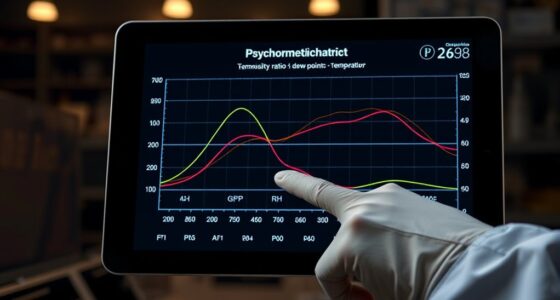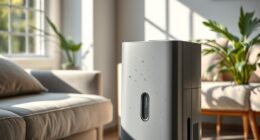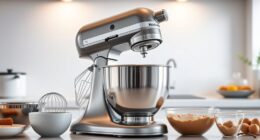We have all heard the expression ‘put yourself in someone else’s shoes.’ But what if those shoes are causing pain and discomfort? That’s where orthopedic devices come into play.
These custom-made devices provide support and relief for a variety of conditions, from foot and ankle problems to back and knee issues.
In this article, we’ll explore the importance of orthopedic appliances, how they work, and the benefits of choosing custom-made orthotics.
So, let’s step into the world of orthopedic appliances and discover how they can improve our lives.

Key Takeaways
- Orthopedic appliances improve mobility and overall quality of life.
- They assist in correcting and improving posture, gait, and overall movement in children with developmental disorders.
- Orthopedic appliances alleviate pain, promote healing, and improve overall function.
- Custom-made orthotics offer enhanced comfort and support, reducing strain on joints and muscles.
Importance of Orthopedic Appliances
Orthopedic appliances play a crucial role in improving our mobility and overall quality of life. Whether it’s a sports injury or a developmental disorder in children, orthopedic appliances provide effective solutions.
In the case of sports injuries, these appliances help in the recovery process by providing support and stability to the affected area. They can aid in reducing pain, preventing further damage, and promoting faster healing.
For children with developmental disorders, orthopedic appliances such as braces or splints assist in correcting and improving their posture, gait, and overall movement. By providing the necessary support and alignment, these appliances enhance their physical development and allow them to engage in daily activities more comfortably.
As we delve further into common conditions treated with orthotics, we’ll explore the diverse range of orthopedic appliances employed in orthotic treatment plans.

Common Conditions Treated With Orthotics
We commonly treat a variety of conditions with orthotics, which provide effective solutions for improving mobility and overall quality of life. Here are four common conditions that can be treated with orthotics:
- Flat Feet: Orthotics designed for flat feet provide arch support and help distribute weight properly, reducing foot pain and improving stability.
- Plantar Fasciitis: Orthotics for plantar fasciitis offer cushioning for the heel and arch, relieving pain and inflammation caused by this common foot condition.
- Shin Splints: Orthotics can help alleviate the pain and discomfort associated with shin splints by providing shock absorption and reducing stress on the lower leg.
- Overpronation: Orthotics can correct overpronation, a condition where the feet roll inward excessively, leading to issues such as foot pain and instability.
How Orthopedic Appliances Work
To understand how orthopedic appliances work, it’s important to recognize the role they play in providing support and improving mobility for individuals with various musculoskeletal conditions. Orthopedic appliances, such as braces, splints, and orthotics, are designed to address specific issues and promote healing. Their effectiveness lies in their ability to align and stabilize the affected area, reducing pain and preventing further damage.
Orthopedic appliance design takes into account the unique needs of each patient. These devices are typically custom-made to ensure proper fit and functionality. They’re constructed using durable materials that can withstand the demands of daily use. In addition, orthopedic appliances are often adjustable, allowing for individualized support and comfort.
By providing targeted support, orthopedic appliances help individuals regain mobility and improve their quality of life.

In the next section, we’ll explore the benefits of custom-made orthotics in more detail.
Benefits of Custom-Made Orthotics
Custom-made orthotics offer numerous benefits for individuals with musculoskeletal conditions, providing personalized support and improved mobility. Here are four key benefits of custom-made orthotics:
- Enhanced Comfort: Custom-made orthotics are designed to fit the unique shape and biomechanics of an individual’s feet, providing optimal comfort and reducing discomfort associated with conditions like plantar fasciitis or flat feet.
- Improved Alignment: Orthotics help to correct biomechanical imbalances and improve alignment, reducing strain on joints, muscles, and ligaments. This can alleviate pain and prevent further damage to the musculoskeletal system.
- Increased Stability: Custom-made orthotics provide added stability and support to the feet and ankles, reducing the risk of falls and injuries. They can also improve balance and proprioception, enhancing overall mobility and confidence.
- Injury Prevention: By correcting alignment issues and providing support, custom-made orthotics can help prevent injuries caused by overuse or improper biomechanics. They can be particularly beneficial for athletes or individuals with active lifestyles.
Different Types of Orthopedic Appliances
When it comes to orthopedic appliances, there are several different types that can be used to address various musculoskeletal conditions.
Common orthopedic appliances include braces, splints, and casts. These appliances are designed to provide support, immobilization, and stabilization to injured or weakened body parts.

They can help alleviate pain, promote healing, and improve overall function, making them a valuable tool in the field of orthopedics.
Common Orthopedic Appliances
We regularly use common orthopedic appliances to provide personalized support and treatment for various musculoskeletal conditions. These appliances are important in helping patients regain mobility, alleviate pain, and improve their overall quality of life.
Here are four different types of orthopedic appliances commonly used:
- Orthotic devices: These appliances are designed to support and align specific body parts, such as braces for the spine, knee, ankle, or foot. They help stabilize joints, correct deformities, and promote proper healing.
- Prosthetic limbs: These appliances are used to replace missing or amputated limbs. They’re custom-made to match the individual’s needs, providing them with mobility and independence.
- Orthopedic footwear: These specially designed shoes provide extra support, cushioning, and stability for individuals with foot or ankle problems. They help alleviate pain, improve gait, and prevent further damage.
- Mobility aids: These appliances include crutches, canes, walkers, and wheelchairs. They assist individuals with limited mobility to move around safely and independently.
Benefits of Orthopedic Appliances
Continuing from our discussion of common orthopedic appliances, it’s important to highlight the benefits that these different types of orthopedic appliances provide.

Orthopedic appliances offer numerous advantages to individuals with musculoskeletal conditions or injuries. One of the main benefits is pain relief. Orthopedic appliances, such as braces or splints, help to stabilize and support injured or weakened areas, reducing pain and discomfort.
Additionally, these appliances can promote proper alignment and posture, aiding in the correction of skeletal or muscular imbalances. They also facilitate the healing process by immobilizing or limiting movement in affected areas, allowing for faster recovery.
Furthermore, orthopedic appliances can enhance mobility and functionality, enabling individuals to engage in daily activities with greater ease. By providing support, stability, and protection, orthopedic appliances contribute to improved quality of life and overall well-being.
Transitioning to the next section, let’s now explore how to choose the right orthotic for your needs.

Choosing the Right Orthotic for Your Needs
When choosing the right orthotic for your needs, there are a few important points to consider.
Firstly, you’ll need to decide between a custom or prefabricated orthotic based on the severity and uniqueness of your condition.
Secondly, the material of the orthotic is crucial as it determines the level of support and comfort provided.
Lastly, the durability of the orthotic should be taken into account to ensure its longevity and effectiveness in managing your condition.

Custom or Prefabricated
As we explore the topic of choosing the right orthotic for your needs, it’s important to consider whether a custom or prefabricated orthotic would be more suitable.
Here are four key factors to consider when making your decision:
- Personalization: Custom orthotics are specifically designed to fit the unique shape and biomechanics of your feet, offering a higher level of customization compared to prefabricated options.
- Medical Necessity: If you have a specific foot condition or require specialized support, such as for a high arch or pronation issues, a custom orthotic may be recommended by your healthcare provider.
- Cost: Prefabricated orthotics are generally more cost-effective compared to custom orthotics, which involve additional expenses like consultations, measurements, and fabrication.
- Time: Custom orthotics require time for measurements, fittings, and fabrication, while prefabricated orthotics are readily available for immediate use.
When considering whether to choose custom or prefabricated orthotics, it’s essential to weigh the benefits of customization against the cost and time factors involved. Consulting with a healthcare professional can help you make an informed decision based on your specific needs and budget.
Material and Durability
Now, let’s delve into the material and durability of orthotics to further guide you in choosing the right orthotic for your needs. The material selection of orthotics plays a crucial role in their durability and effectiveness. Different materials offer different levels of support and comfort, so it’s important to consider your specific needs. Here is a table that provides a summary of commonly used materials in orthotics:

| Material | Description | Durability |
|---|---|---|
| Carbon fiber | Lightweight and strong | Very durable |
| EVA foam | Cushioning and shock absorption | Moderate durability |
| Polypropylene | Flexible and heat-moldable | Good durability |
To ensure the longevity of your orthotic, proper maintenance is essential. Here are a few maintenance tips:
- Clean your orthotic regularly with mild soap and water.
- Avoid exposing them to excessive heat or direct sunlight.
- Inspect them regularly for any signs of wear and tear, and replace as needed.
Frequently Asked Questions About Orthopedic Appliances
We often receive questions about orthopedic appliances. Here are some frequently asked questions about orthopedic braces and orthopedic shoe inserts:
- How do orthopedic braces work?
Orthopedic braces provide support and stability to joints, muscles, and bones. They help to alleviate pain, promote healing, and prevent further injury by immobilizing or limiting movement in the affected area.
- Can orthopedic braces be worn during physical activities?
Yes, many orthopedic braces are designed to be worn during physical activities. They’re made from lightweight and breathable materials that allow for freedom of movement while still providing the necessary support.

- Do orthopedic shoe inserts really help with foot pain?
Yes, orthopedic shoe inserts, also known as orthotics, can help with foot pain by providing arch support, cushioning, and proper alignment. They can alleviate discomfort caused by conditions such as plantar fasciitis, flat feet, and arthritis.
- Are orthopedic appliances covered by insurance?
It depends on your insurance plan. Some insurance companies may cover the cost of orthopedic appliances, especially if they’re deemed medically necessary. It’s best to check with your insurance provider for specific coverage details.
Frequently Asked Questions
How Long Does It Take to Get Used to Wearing Orthopedic Appliances?
It takes some time to adjust to wearing orthopedic appliances, but the benefits for adults are worth it. The adjustment period varies depending on the individual, but with patience and proper guidance, the process can be successful.
Can Children Benefit From Orthopedic Appliances?
Children can benefit from orthopedic appliances, just like adults. While there are similarities in the types of appliances used, such as braces, there are also differences, particularly in the treatment of pediatric scoliosis.

Are Orthopedic Appliances Covered by Insurance?
Yes, orthopedic appliances are typically covered by insurance. However, it is important to note that the coverage may vary depending on the specific insurance plan and the costs associated with the appliances.
Can Orthopedic Appliances Prevent the Need for Surgery?
Orthopedic appliances, such as braces and supports, can sometimes prevent the need for surgery by providing stability and support to injured or weakened areas. Alternative treatments to appliances include physical therapy and medication.
What Are the Potential Side Effects of Wearing Orthopedic Appliances?
Potential risks and discomfort are important considerations when wearing orthopedic appliances. While they can provide support and aid in recovery, side effects may include skin irritation, muscle weakness, and limited range of motion.
Conclusion
In conclusion, orthopedic appliances play a crucial role in treating various conditions and improving quality of life.

Did you know that over 70% of people who use custom-made orthotics experience significant pain relief? Whether it’s managing foot problems or providing support for joint issues, orthopedic appliances offer personalized solutions that can make a real difference.
So, if you’re seeking relief from discomfort or looking for better mobility, consider consulting a healthcare professional to find the right orthotic for your needs.










